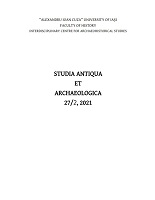The Long Path of Nanāia from Mesopotamia to Central and South Asia
The Long Path of Nanāia from Mesopotamia to Central and South Asia
Author(s): Andrew Schumann, Vladimir SazonovSubject(s): Museology & Heritage Studies, Visual Arts, Ancient World
Published by: Editura Universităţii »Alexandru Ioan Cuza« din Iaşi
Keywords: world-system; Nanā; Nanāia; Oešo; Umā; Durgā; Maheśvara;
Summary/Abstract: In this paper we show that the Mesopotamian goddess Nanāia had some attributes (such as ‘warrior goddess’ and ‘sitting on a tiger/lion/standing with a lion/lions’) which were preserved in her worship from the period of Ur III (the second millennium BC) in Mesopotamia up to the period of the Kuṣāṇas and Kūšānšāhs (from the 1 st century AD to the late 4 th century AD), and even up to the period of later Nomadic dynasties of Northern India, such as the Kidarites and Hephthalites (from the 4 th century AD to the 8 th century AD) in Central and South Asia. In later stages we detect early Hindu images of Nanāia presented as Durgā as well as early Hindu images of the divine couple Oešo and Nanāia presented as Umāmaheśvara. So, the standard Indian iconographic motif of Durgā could be traced back to the Mesopotamian goddess Nanāia.
Journal: Studia Antiqua et Archaeologica
- Issue Year: 27/2021
- Issue No: 2
- Page Range: 279-299
- Page Count: 21
- Language: English

